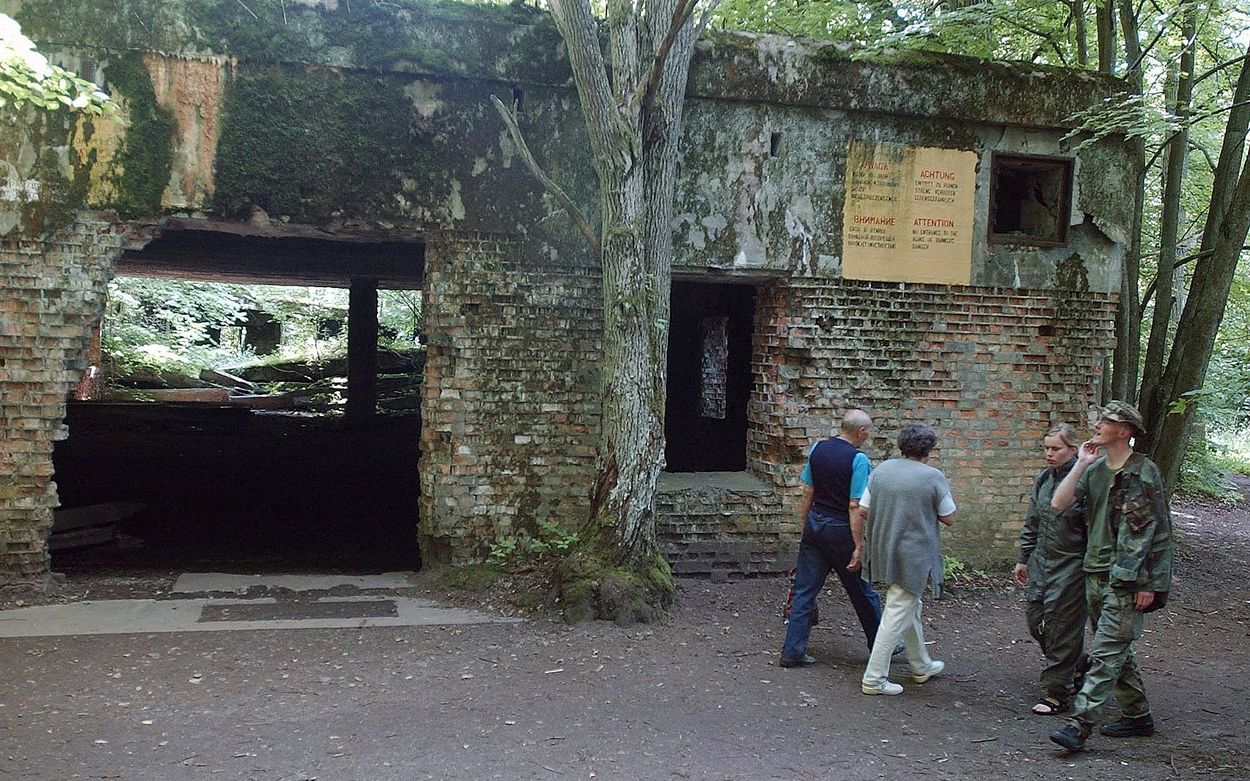
The Wolf's Lair, also known as Wolfsschanze, was Adolf Hitler's top-secret military headquarters during World War II. Hidden deep in the forests of Poland, this heavily fortified complex served as the nerve center for Nazi operations on the Eastern Front. Why was it called the Wolf's Lair? Hitler often used the alias "Wolf," a nod to his name's meaning. The lair was a sprawling network of bunkers, barracks, and shelters, designed to withstand intense bombings. Despite its secrecy, the site became infamous for the failed assassination attempt on Hitler by Colonel Claus von Stauffenberg in 1944. Today, the remnants of the Wolf's Lair stand as a chilling reminder of a dark chapter in history, attracting history buffs and curious travelers alike.
Key Takeaways:
- The Wolf's Lair was Hitler's secret headquarters during World War II, with its own power plant, cinema, and even a small zoo. It was abandoned and destroyed as the war turned against Germany.
- The failed assassination attempt on Hitler's life at the Wolf's Lair marked a turning point in the war, exposing dissent within the German military. Today, it's a popular tourist destination.
The Wolf's Lair: A Historical Enigma
The Wolf's Lair, also known as Wolfsschanze, was Adolf Hitler's first Eastern Front military headquarters during World War II. Located in the Masurian woods of Poland, it was a site shrouded in secrecy and intrigue. Let's dive into some fascinating facts about this mysterious place.
-
The Wolf's Lair was constructed in 1941 and served as Hitler's headquarters until 1944.
-
The name "Wolf's Lair" comes from Hitler's self-adopted nickname, "Wolf."
-
The complex covered an area of approximately 6.5 square kilometers.
-
It was surrounded by three security zones, each with increasing levels of security.
-
The site included over 80 buildings, including bunkers, barracks, and shelters.
-
The bunkers were made of reinforced concrete, with walls up to 8 meters thick.
-
The Wolf's Lair was heavily camouflaged to blend in with the surrounding forest.
-
It had its own power plant, water supply, and communication systems.
-
The complex was protected by minefields, barbed wire, and anti-aircraft guns.
-
Hitler spent over 800 days at the Wolf's Lair during the war.
Daily Life at the Wolf's Lair
Life at the Wolf's Lair was a mix of military operations and personal routines. The site was bustling with activity, yet it maintained an air of isolation.
-
Around 2,000 people lived and worked at the Wolf's Lair, including military personnel, staff, and guards.
-
Hitler's personal quarters were modest, consisting of a bedroom, office, and conference room.
-
The Führer had a strict daily routine, including morning briefings, lunch, and afternoon naps.
-
Meals were prepared in a central kitchen and delivered to various parts of the complex.
-
The site had a cinema where films were shown to entertain the residents.
-
There was a small zoo with deer and other animals for Hitler's amusement.
-
The Wolf's Lair had its own medical facilities, including a hospital and dental clinic.
-
Communication with the outside world was maintained through a sophisticated network of radio and telephone lines.
-
The complex had a railway station for transporting supplies and personnel.
-
Security was tight, with guards patrolling the area day and night.
The Assassination Attempt
One of the most significant events at the Wolf's Lair was the assassination attempt on Hitler's life, known as Operation Valkyrie.
-
On July 20, 1944, Colonel Claus von Stauffenberg planted a bomb in Hitler's conference room.
-
The bomb exploded, killing four people and injuring many others.
-
Hitler survived the blast with minor injuries, largely due to the heavy oak table that shielded him.
-
The failed assassination attempt led to a brutal crackdown on the conspirators.
-
Over 7,000 people were arrested, and around 4,980 were executed in the aftermath.
-
The event marked a turning point in the war, as it exposed the growing dissent within the German military.
The Abandonment and Destruction
As the war turned against Germany, the Wolf's Lair was eventually abandoned and destroyed.
-
In November 1944, Hitler left the Wolf's Lair for the last time.
-
The site was evacuated in January 1945 as Soviet forces advanced.
-
The Germans attempted to destroy the complex to prevent it from falling into enemy hands.
-
Many of the buildings were blown up, but some structures remain intact to this day.
-
The site was heavily mined, making it dangerous to explore for years after the war.
-
In the 1950s, the Polish government cleared the mines and opened the site to the public.
-
Today, the Wolf's Lair is a popular tourist destination, attracting history enthusiasts from around the world.
-
Visitors can explore the ruins and learn about the site's history through guided tours and exhibits.
-
The Wolf's Lair remains a haunting reminder of the dark days of World War II and the lengths to which Hitler went to maintain his grip on power.
Final Glimpse at Wolf's Lair
Wolf's Lair, Hitler's secret headquarters during World War II, holds a wealth of history. Nestled in the Masurian woods of Poland, this complex was the site of major wartime decisions and even an assassination attempt on Hitler. The bunkers, now in ruins, serve as a stark reminder of the past. Visiting the site offers a unique glimpse into the strategies and daily life of the Nazi regime. Despite its dark history, Wolf's Lair attracts many tourists and history buffs. The eerie atmosphere and historical significance make it a must-see for those interested in World War II. Whether you're a history enthusiast or just curious, exploring Wolf's Lair provides a deeper understanding of the events that shaped our world. Remember, history isn't just in books; sometimes, it's hidden in the forests, waiting to be discovered.
Frequently Asked Questions
Was this page helpful?
Our commitment to delivering trustworthy and engaging content is at the heart of what we do. Each fact on our site is contributed by real users like you, bringing a wealth of diverse insights and information. To ensure the highest standards of accuracy and reliability, our dedicated editors meticulously review each submission. This process guarantees that the facts we share are not only fascinating but also credible. Trust in our commitment to quality and authenticity as you explore and learn with us.


